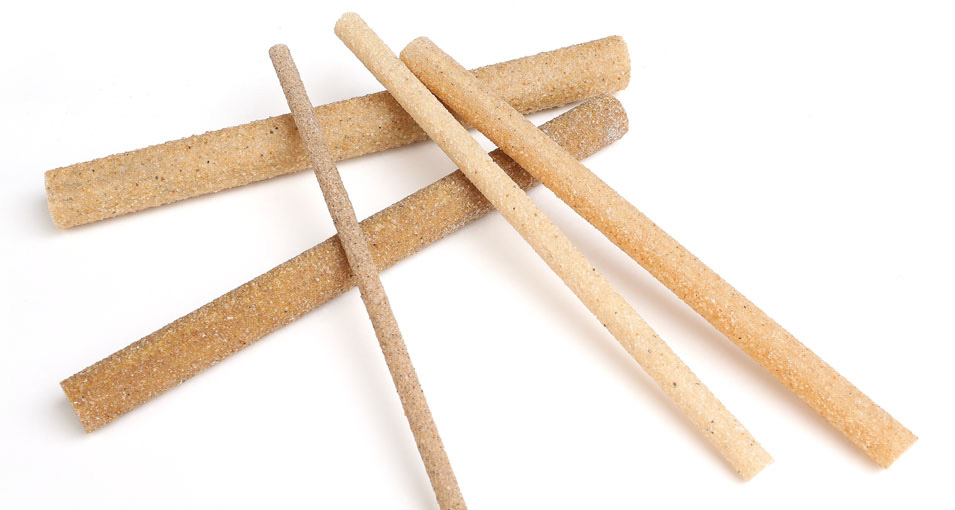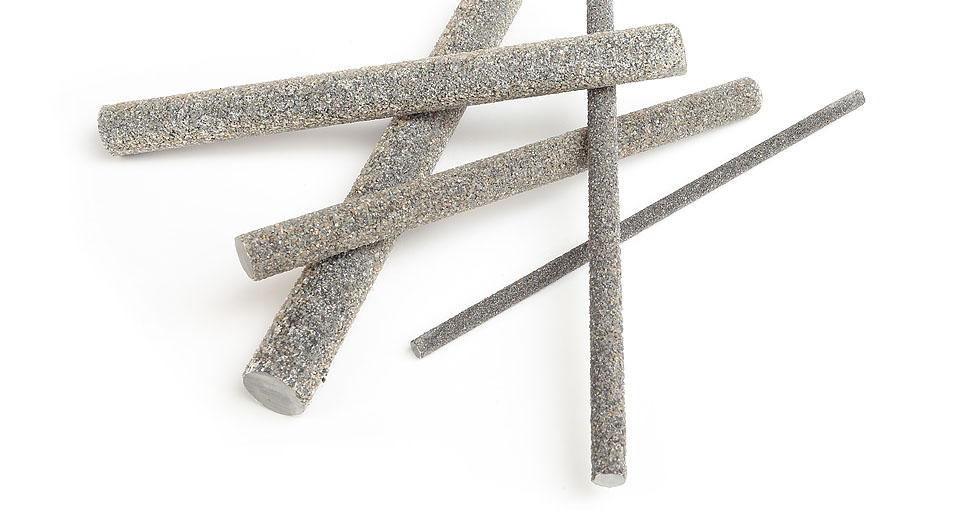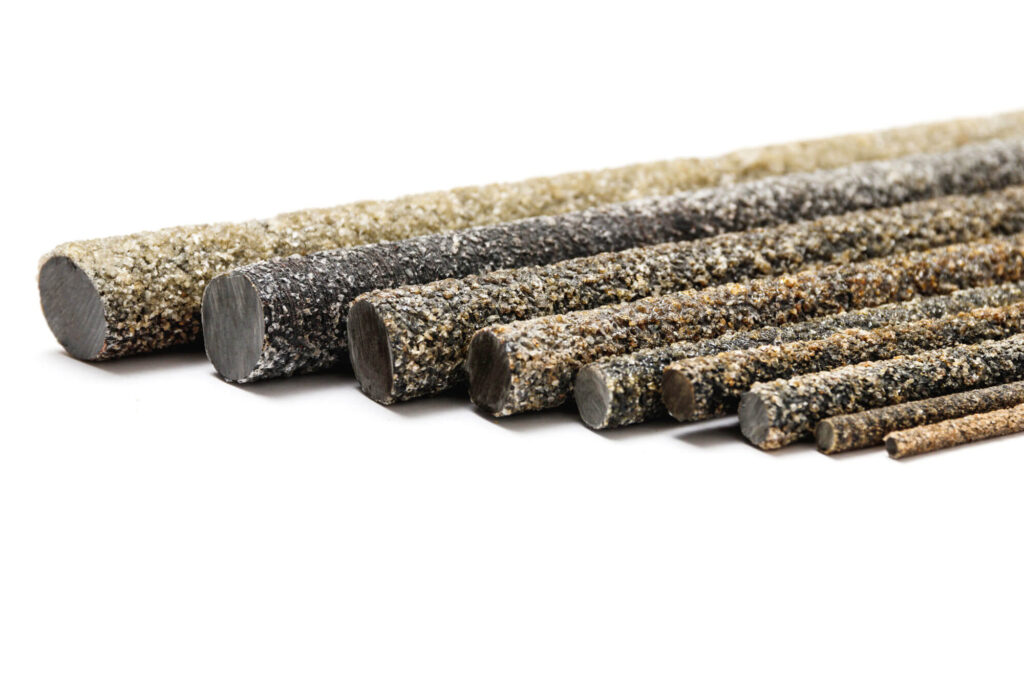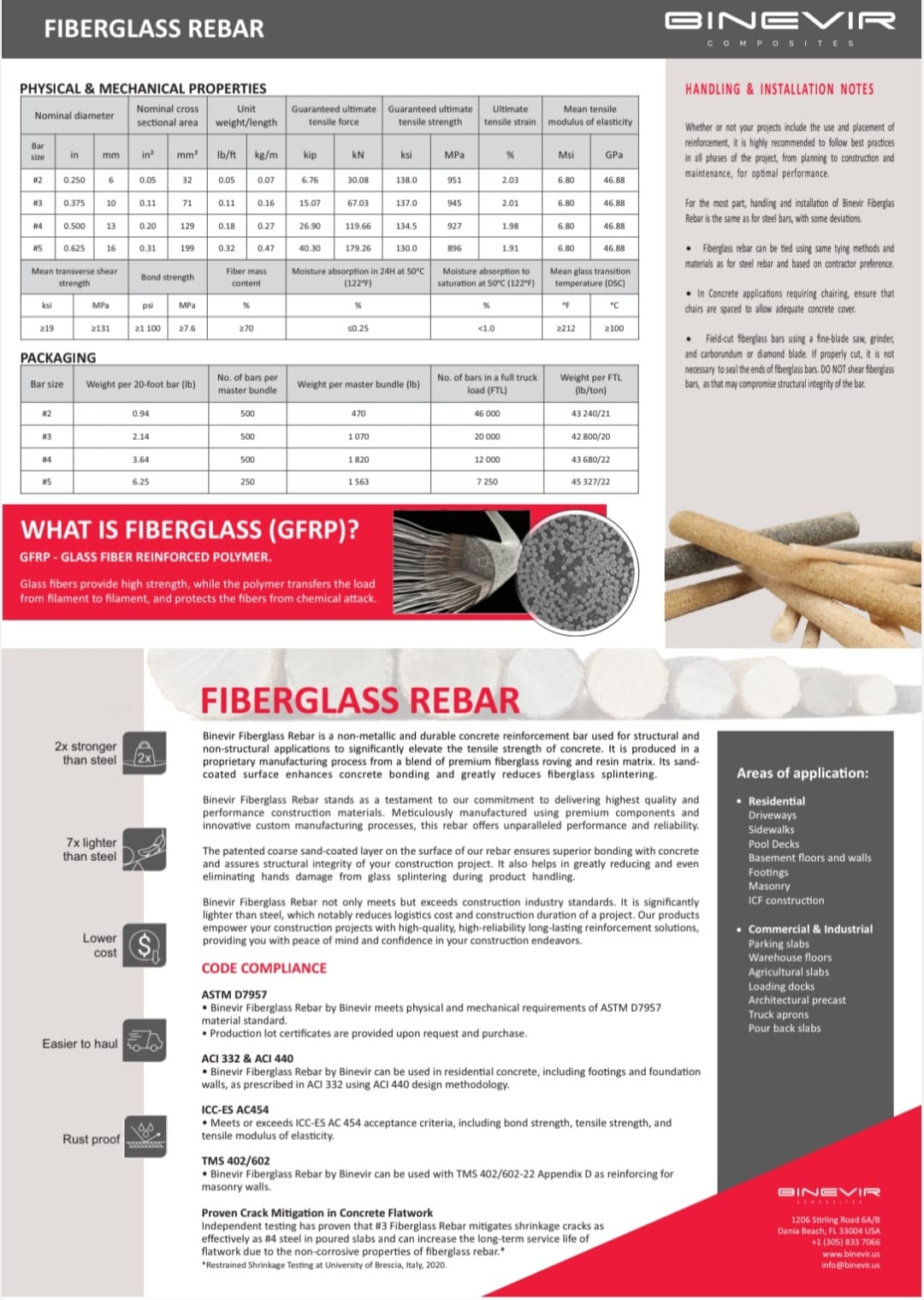Fiberglass And Basalt Composite Rebar
Glass Fiber Reinforced Polymer (GFRP) rebar and Basalt Fiber Reinforced Polymer (BFRP) rebar, are solid reinforcing bars used in structural and non-structural applications. They are composed of high-quality fiberglass or basalt roving (respectively) and a strong and resistant bonding agent, resulting in durable and reliable materials with superior tensile strength.
Our GFRP and BFRP bars are specifically designed to be well suited for both prestressed and non-prestressed applications and exhibit 2+ times the strength of steel bars, while being significantly lighter, completely non-corrosive, non-conductive of electricity and heat, non-deforming from temperature fluctuations, resistant to alkali and other chemicals, eco-friendly and longer lasting.
In addition, our composite bars exhibit proprietary sand-coated outside surface which enhances its bonding strength with concrete and greatly reduces hand damage from splintering during product handling.
While GFRP and BFRP bars have emerged as a viable alternatives to traditional steel rebar for concrete reinforcement, it is important to note that direct substitution of steel rebar with its GFRP or BFRP counterparts may not always be feasible due to differences in mechanical properties, such as lower modulus of elasticity, shear strength, and limited maximum sustained shear stress of GFRP and BFRP bars. Therefore, it is crucial to adhere to applicable guidelines when designing GFRP and BFRP-reinforced concrete structures. By following these guidelines and considering the unique characteristics of GFRP and GFRP rebar, engineers can ensure the successful integration of this innovative reinforcement solution into their projects.
GFRP rebar vs BFRP rebar
Both fiberglass and basalt composite rebar options are highly effective in replacing steel rebar in many construction applications and both carry less than 1/0th the carbon footprint of steel. However, since basalt fiber is made from natural volcanic rock and basalt pultrusion fabrication is less energy-intensive than fiberglass rebar manufacturing, basalt rebar is considered somewhat ECO-greener than its fiberglass sibling (95% vs 85%, respectively). BFRP also exhibits higher tensile strength, though both are far above steel. GFRP fibers can maintain their performance in temperatures up to 200° C, while BFRP fibers tolerate temperatures up to 400° C. However, since both BFRP and GFRP use similar bonding agents with average heat tolerance of 200° C, both rebar products are rated at that temperature.
On the other hand, basalt rebar is considerably more expensive than fiberglass rebar (often 2+ times), when manufactured to same quality and performance specs – an important consideration when sizing and pricing a project.



Applications Of Composite Rebar
- Foundations for commercial and residential buildings
- Water channels, ponds, marine construction
- Roads and driveways
- Parking garages
- Retaining walls
- Pavements
- Industrial floors and roads
- Seawalls, bridges, overpasses
- Railings and fences
- Slabs and concrete fences
- Flat works
- Precast
- Decorative casting
- Repair and retrofit projects
- Many more

